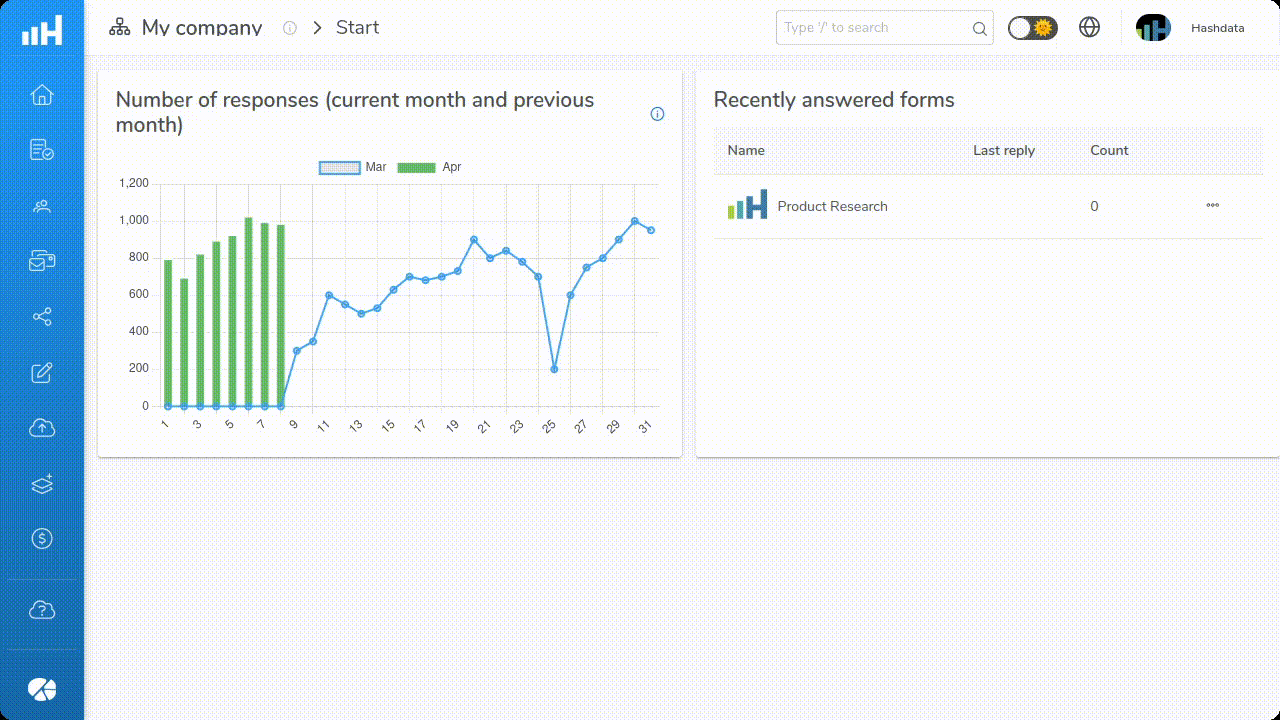Add Navigation Logic
Navigation Logic is a feature that allows you to customize the form's navigation flow through actions, making the form more dynamic, relevant and adapted to the context of the responses.
How does it work?
Navigation logic acts as a set of conditional rules that define:
- What questions will be displayed: Some questions may be skipped or added to the stream based on previous responses.
- The order in which questions are displayed: The form can guide the user to different sections or specific questions according to predefined criteria.
For example, after filling out part of the form, the following question is presented: "We would like to know more about you. We have a few more questions. Do you want to continue?":
- If the user selects "Yes", the form moves on to the next question, continuing the main flow.
- If the answer is "No", the form skips to the closing stage, ending data collection.

Features of the Navigation Logic configuration. Click the image to enlarge it.
Benefits of navigation logic
- Personalized experience: The respondent sees only the questions relevant to their case.
- Efficiency: Reduces the time needed to complete the form by avoiding unnecessary questions.
- Accuracy of collected data: Improves the quality of information by eliminating irrelevant responses.
- Flexibility: Allows you to create complex forms with flows that adapt to different scenarios.
To include navigation logic
- While in the Elements tab, click on
, available at the top of each form element, except the first one;
- Create as many logical conditions as necessary. If there are no conditions, the action will be executed whenever the logic is evaluated;
Learn more about creating conditions for navigation logic
Conditions
-
Choose the conditional question. All questions whose order is lower than the current element are displayed.
-
After selecting the conditional question, the system will display the logical operator of the condition according to the type of the conditional question element. For example, for elements of the type Single select and Multiple select, the following options will be displayed: equal to, is filled or is empty; for elements of the type Text, the following options will be displayed: equal to, includes, is filled and is empty.
-
Set the value of the conditional question that must be satisfied to complete the logical condition. For elements of the types Single select and Multiple select, for example, the available answer options are displayed. For Text type elements, you must enter the expected text.
-
Use the
button to include as many display conditions as necessary.
-
The
button orders the logical conditions automatically, according to the order in which the elements were inserted in the form. For example, if a question in a condition precedes the order of the question in the previous condition, that condition will be placed before it.
- Choose the Action that should be performed:
- Go to next question in the form;
- Go to (choose the question to which you want to forward the form navigation flow);
- Finish (displays the end screen)